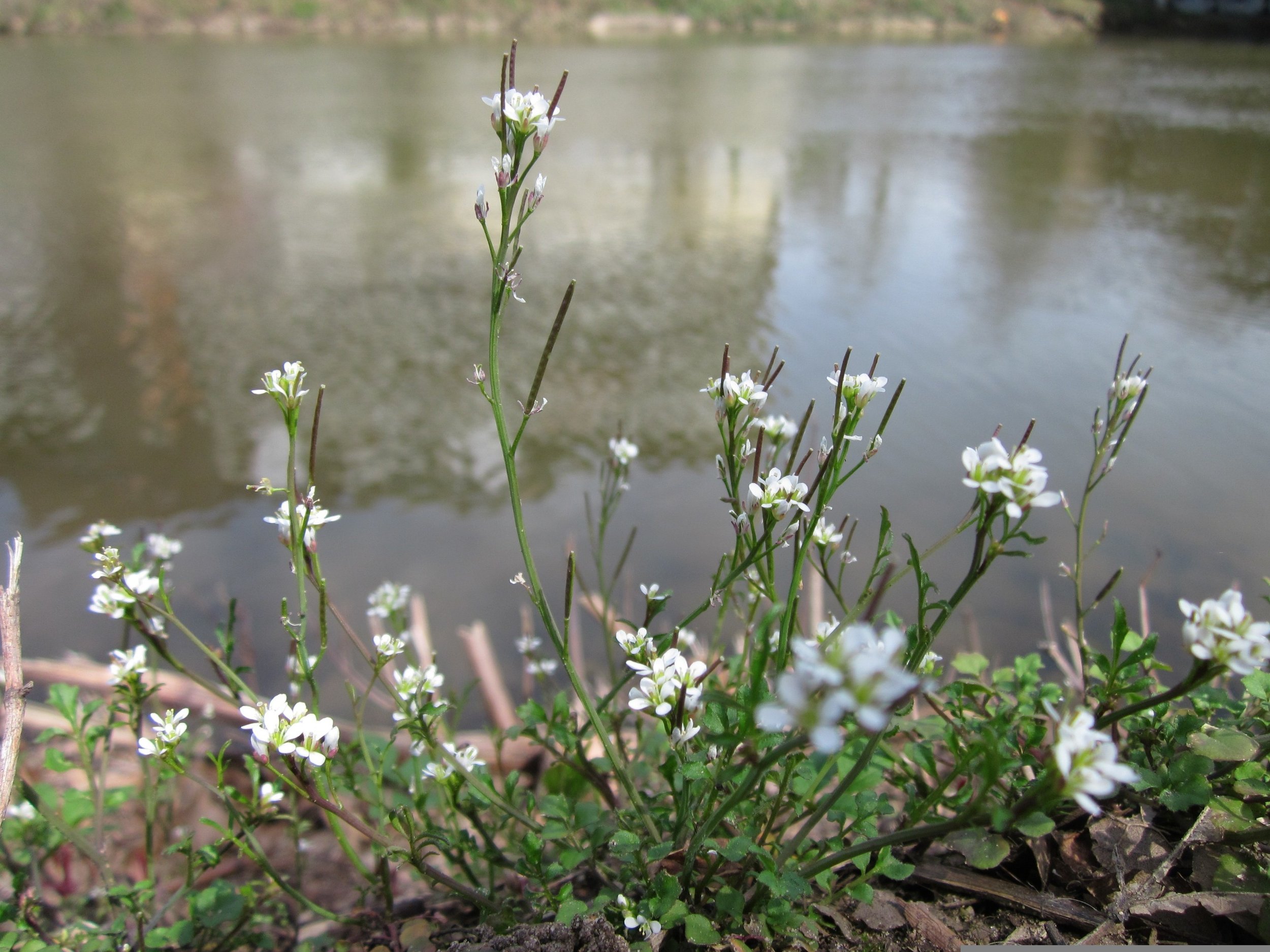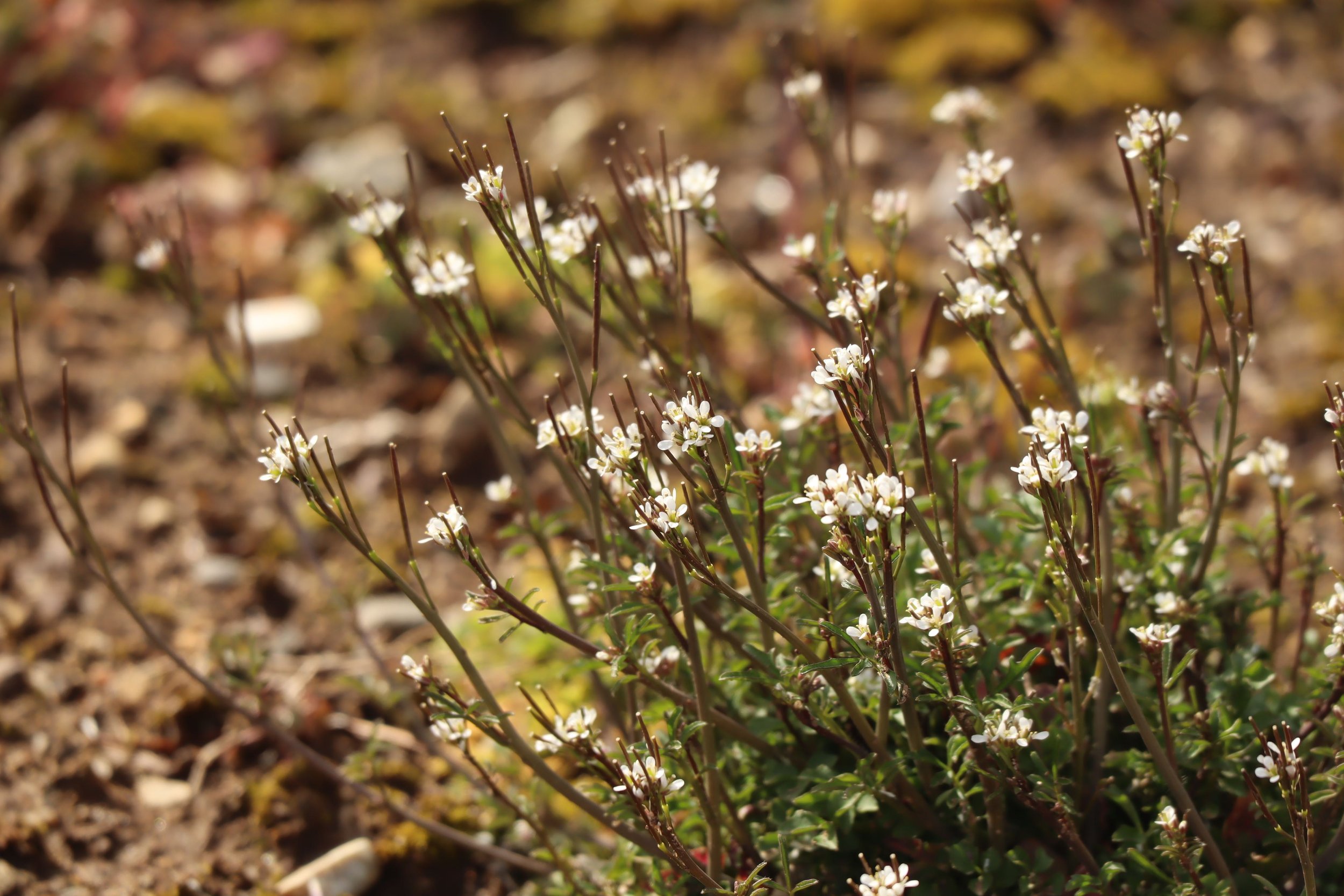Yesterday was one of those rare, glorious, warm days in the middle of winter. It is too early to start seeds or fertilize. Despite the calendar saying early February, I was able to work outdoors for hours without bundling up for a blizzard. And what did I do during those hours? Pulled weeds, of course.
The recent warm days, the rains, and the slow lengthening of days have encouraged all those dormant nasties to spring to life. Weeds are tiny and the soil is damp, so they cannot resist a gentle tug. If you get rid of them now, you will be a happier gardener come May. By that time, roots are deeper and some plants have even dropped seeds and started to spread across lawns and flower borders.
One offender that attempts to invade my space every year is Hairy Bittercress, Cardamine hirsuta. It is classified as a winter weed, but they pop up all year long in my zone 8 garden. These weeds are found in gardens across the eastern half of the US and in southwest Canada. They prefer moist, acidic soil but will grow virtually anywhere.
When I was enrolled in the Clemson University Extension Master Gardener education program more than twenty years ago, one of our instructors brought slides showing a greenhouse full of prepared seed flats. In one flat, a single Bittercress plant was allowed to bloom and go to seed. The lifecycle of Bittercress is reported to be 12 weeks. The timelapse photos indicated that one plant had turned into hundreds or maybe thousands in the greenhouse experiment, with all the surrounding flats showing baby Bittercresses. A single plant can produce 600-1,000 seeds and the germination rate is high. The seeds are held in long, skinny pods known as siliquas. When ripe, these pods eject their seeds up to several feet away from the mother plant. It does not take long for this invader to get out of control in the home garden. To prevent spread, maintain a healthy lawn with no bare patches, mulch garden beds, mow flowering plants before they set seed, and pull seedlings before they gain size and strength.
Yesterday, I removed Dandelion, Hairy Vetch, Chickweed, Henbit, Purple Deadnettle, Common Mallow, Purple Woodsorrel (creeping Oxalis), Common Plantain, Wild Garlic and several I know by sight but not by name. I’m keeping a vigilant eye open and weeding tool at the ready for emerging Mulberryweed (Fatoua villosa, easily the wickedest weed I’ve ever encountered), flat Prostrate Spurge, and prickly Horsenettle. I know they are out there.
A casual glance across beds and borders may not reveal the presence of these intruders while they are young and small. Once the knees are on the gardeners’ kneeling pad, they are more apparent. Use the occasional mild day to remove them now. You will be glad you did.

